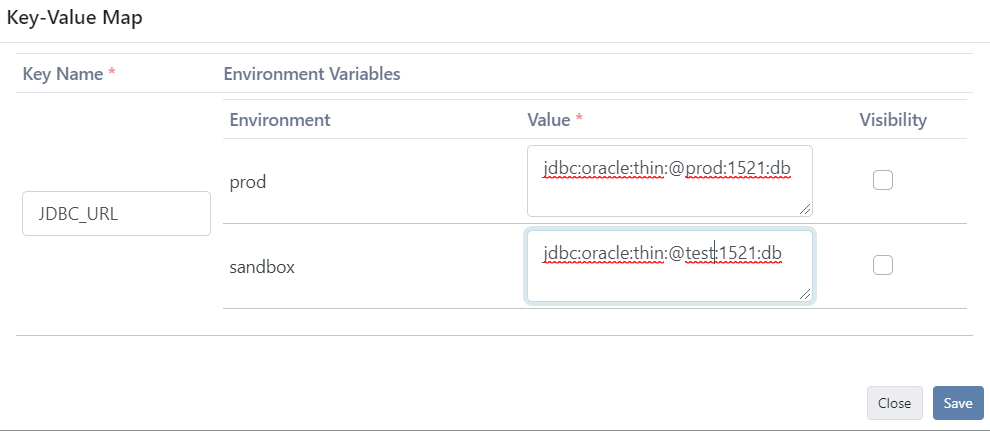There are situations where you want to store data for use at runtime. For example, you can use Key-Value Maps in cases where the JDBC_URL value should not be hard-coded, only the runtime is needed and you do not want the Developers to see this data. Key-Value Maps are variables that are defined specifically for each project and must be defined for each environment. The same key can have different values in Production, Sandbox, Test environments. Thus, three different values can be used for the environment where they are defined with a single key.
Example usage scenarios;
- You have a connection configuration that needs to call a different database in a Test environment and a different database in a Production environment. Instead of hard-coding database information into the Connection configuration, you can have the Connection configuration detect which environment it is in and with the corresponding Key Value Map in the active environment at runtime. And later, if one or both of your databases change, simply update the Key Value Map.
Creating a New Key-Value Map
Click the "+New" button on the Key-Value Maps screen and define the values of the Key name you have defined for each environment.

Using Key-Value Maps
On the connection configurations page, for example, where you will connect to Oracle Database, instead of entering a JDBC URL, you can choose from the Key Value Maps you have created before.

When you click on the "Click to enter the value" link and start entering a few characters of the Key information in the section starting with ${, the Key value maps defined in the active project will be loaded.
